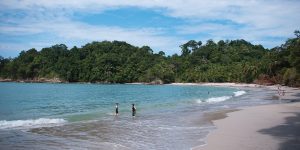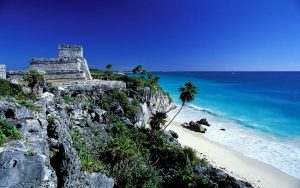Covering almost 14 million square kilometres, Antarctica is one of the most forbidding places on earth. It is unique in that it doesn’t have a native population, although seven nations claim different parts of it. Antarctica features fascinating history, varied wildlife and some of the most spectacular scenery you are ever likely to experience. However, much of Antarctica is indescribable and can only fully be appreciated through your own eyes. Here we’ll cover some of the key places to visit in Antarctica.
The Antarctic Peninsula
This is the northernmost stretch of land and is the most visited area despite only being accessible by boat. Ruggedly beautiful you can see a variety of whales, seals and birds alongside rocky cliff sides, mountainous terrain and floating glaciers. The iceberg-strewn channels and narrow passages are often frequented by expedition cruises which are no surprise as the scenery is breathtaking. The highlight of your trip will most certainly be to set foot on the Antarctic Peninsula. For those most adventurous consider a cruise that offers camping on the Peninsula.
The Antarctic circle
Also known as the Polar Circle, this is one of the five latitude circles used to divide maps of the earth. Few journeys reach this far south passing massive icebergs and endless penguin colonies to reach a latitude of 66.5 degrees south of the equator. A cruise here is a unique experience, and once a year there is 24 hours of daylight during the summer solstice. There are select cruise departures where you can witness the midnight sun!
The South Shetland Islands
These are a large chain of volcanic islands situated 160 kilometres north of the Peninsula. They are home to 16 research stations as well as the only hotel on the continent. Throughout the string of islands, you’ll find spectacular glaciers, fjords and the rocky coastlines populated by penguins and elephant seals. Popular destinations include Elephant, Livingston, Deception and King George Islands. A volcanic eruption more than 10,000 years ago formed the fascinating Deception Island. Since then, it has been the site of one of the worlds most prominent whaling stations.
King George Island
King George is the largest of the South Shetland Islands and one of the most populated in Antarctica. It is home to scientific stations from 12 different countries and an airfield for those wishing to avoid the notoriously rough Drake passage crossing. Due to this, it doesn’t have the same feeling of isolation as other areas in Antarctica. Nevertheless, it is another haven for bird lovers with giant petrels, cormorants, penguins and gulls all nesting here.
South Georgia
The island’s history is a big attraction with the grave of the great explorer, Sir Ernest Shackleton. And the South Georgia museum provides an insight into what it would have been like to be one of the first explorers to discover this isolated region. Alongside its history, South Georgia holds the title of the ‘Galapagos of the Poles’, with an exceptional amount of wildlife. Its rookeries are the largest in the world. You’ll experience varied wildlife encounters with one-day seeing beaches packed with king penguins and then the next they’ll be full of thousands of fur seals. On top of that, it is a birders paradise with the possibility of seeing albatrosses and petrels in abundance. South Georgia’s incredible wildlife makes it one of the most fascinating places to visit in Antarctica.
The Falkland Islands
The Falklands, or Islas Malvinas as they are known in Argentina, are sparsely inhabited islands with a varied landscape of coastal wetlands, white sandy beaches and dramatic cliffs. Travel here will give you an insight into the islands fascinating history with the quaint British town of Port Stanley. Being the largest settlement, it features reminders of its British heritage from red phone boxes to English style pubs. Once the site of a war between the UK and Argentina, these rugged islands hold surprising biodiversity including both Peale’s and Commersons dolphins. They are also home to large colonies of elephant and fur seals, albatrosses and five different species of penguins.
























































